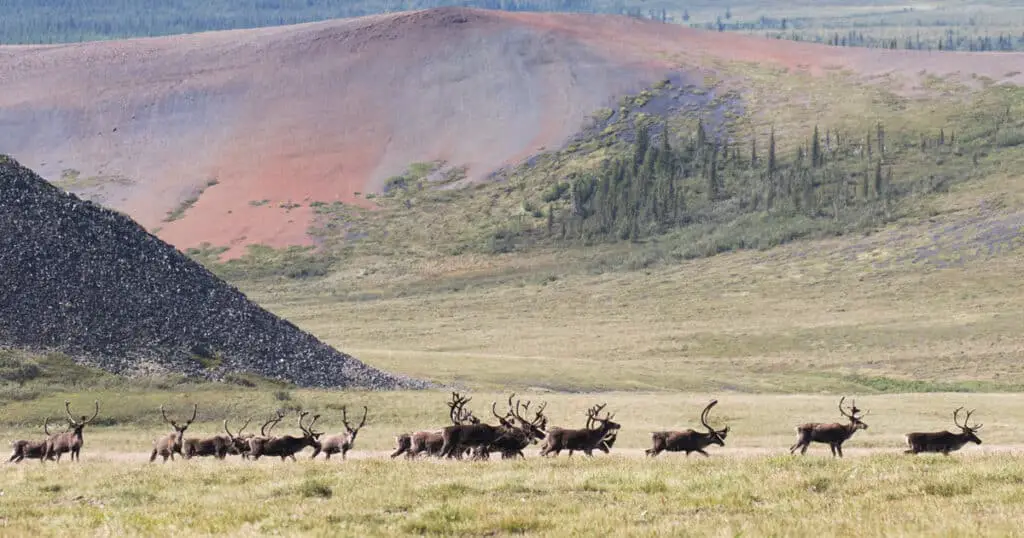If whitetail deer are the only deer species you’ve ever seen, maybe you’re surprised to learn that other kinds of deer are migratory species. Do deer migrate? Yes – there are a wide variety of deer species and some (like Caribou) regularly migrate and are famous for their migration. Other types of deer may never migrate.
In this article, we’ll discuss which species of deer are known to migrate, what leads to their migration, and why some deer migrate and others don’t.
Do Whitetail Deer Migrate?
Whether White Tailed Deer migrate depends on the region where they live and the conditions of their habitat. This species isn’t by nature a migratory deer species, but it can do a certain amount of migration if the circumstances call for it.
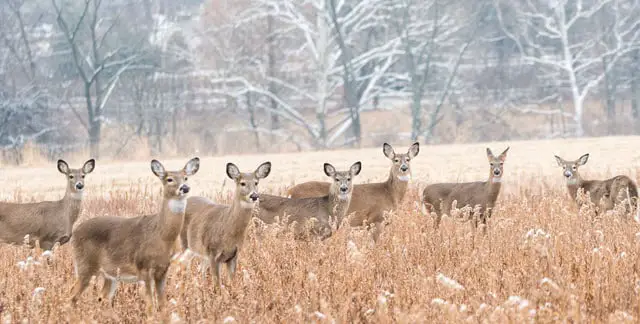
Whitetail deer living in the Eastern, Southern, and Midwestern parts of the United States don’t migrate.
These deer tend to spend as much time in their home territory as possible, which makes them more predictable than other kinds of deer.
However, in Western areas of the country, whitetail deer sometimes do migrate. Like other migrating deer, they do so in herds.
These whitetail deer in Western regions of the United States may migrate from mountainous areas to dense forest for the winter.
They are able to find more food in these lower elevation areas, specifically conifer needles. The greater warmth and tree canopy in the forest is necessary for them in the winter, as well.
Do Caribou Migrate?
There are many differences between whitetail deer and Caribou (and there are even some differences between Reindeer and Caribou … which are technically the same species).
One of those differences is the fact that Caribou always migrate. In fact, this species is well known for its dramatic annual migration.
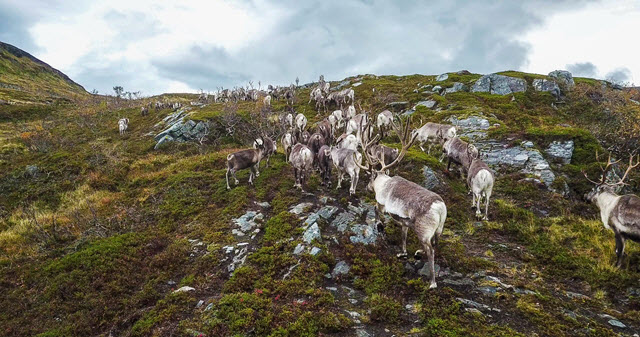
Herds of caribou travel long distances in preparation for the winter and summer. They have their own winter and summer territories, known as ranges.
The migration of caribou is important for specific reasons. One of these is the fact that migration is key to how herds of caribou are able to spread their populations over enormous enough areas for them all to graze successfully and get enough food.
If caribou herds didn’t migrate as they do, they would use up their supplies of food and consume in an inefficient way.
When caribou migrate, they also make it less likely that young Caribou calves won’t be eaten by predators. Also, caribou migration patterns mean that the animals get access to especially nutritious food.
For example, when caribou migrate to the coastal plain when its vegetation has just started sprouting, they enjoy food that has an especially high amount of nutrition.
Caribou will migrate in the inland direction for the late summer, as they can find superior food there during that time of year.
Another benefit for this migration is that there aren’t as many insects to be a nuisance in that region. For the winter months, caribou herds go to areas like the area of boreal forest lower than Brooks Range.
Why Do Caribou Migrate?
As we’ve seen above, caribou migrate for a number of reasons. It is part of this animal’s nature to migrate, and they do so reliably for the summer and winter. Food supplies is one of the main reasons for caribou migration.
In North America, caribou start their spring migration in the early part of March. The migration will continue until May. Caribou split into smaller groups during migration, while at other times they live in an enormous herd.
Different small migration groups tend to migrate at different times. The first caribou to migrate tend to be the pregnant females, as well as a selection of the yearlings.
Other caribou that usually migrate first are the barren cows. Bull caribou will start migrating immediately after this.
When it comes to fall migration for the winter, caribou start this process around late August. This will last until October. Caribou migrate to the south for winter.
As they do so, they increase their feeding to fatten up to face the rigors of winter. During this time, bull caribou shed their antler velvet. They promote this process by rubbing their antlers on trees.
Do Mule Deer Migrate?
Yes, Mule Deer do migrate. Traveling long distances seems to come naturally to this kind of deer. Mule deer in Wyoming have been known to travel 159 miles to get to their summer range.
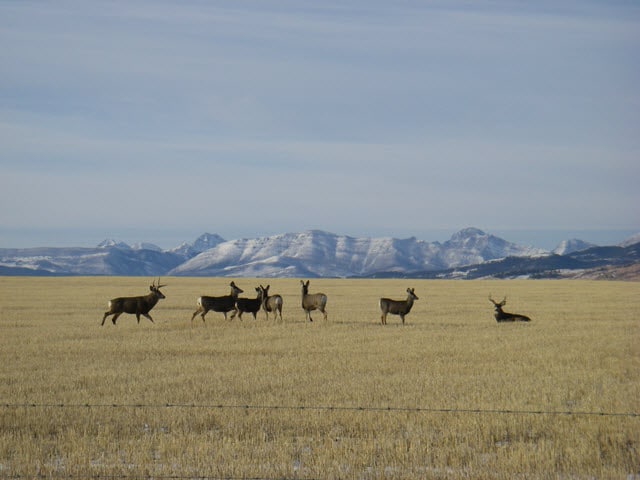
In Wyoming, their winter range tends to be in the state’s Red Desert region. They migrate from there to the mountains for the summer. This trip involved 300 miles of travel.
Mule deer preserve the same migration routes through generations. Mule deer migration for the winter generally happens in stages. First, mule deer will start coming out of the mountain areas.
As they do so, the deer will spend time in various transitional areas that are at different elevations. The ones they will choose depends on how challenging the weather conditions are.
Why Do Mule Deer Migrate?
Mule deer migrate in order to stay close to resources that they need during specific seasons. They go to their winter ranges because those ranges have better resource access and abundance than their summer ranges.
In leaving their summer ranges for the cold snowy months, mule deer are able to avoid a harsh environment that would make survival difficult.
Mule deer would have difficulty surviving if they tried to stay in the same ranges all year long. In the winter, they must go to regions that will provide better food supply and weather.
Do Elk Migrate?
Yes, North American Elk do migrate and they are a migratory deer species. The only time they don’t migrate is when there are unusually moderate seasonal changes.
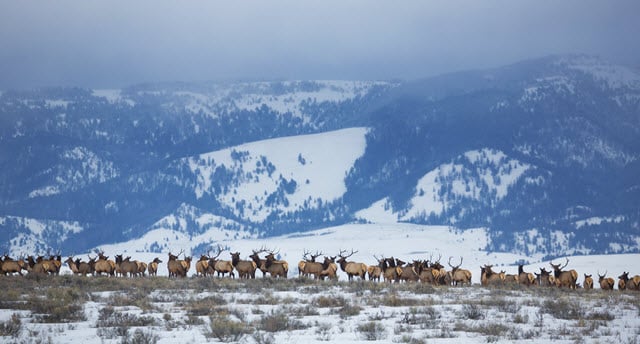
Also, there are certain kinds of elk, such as the Roosevelt Elk, that don’t migrate. The Roosevelt Elk lives in areas of Washington State, Oregon, and California that don’t necessitate migration. This is because of the temperate climate.
Most elk do migrate, however, and some will even trek as far as 100 miles. The Yellowstone Park migration is one of the most famous elk migrations.
The elk population in Yellowstone Park takes place in the spring. The elk travel in the direction of vegetation growth reaching into high-level plateaus.
Elk are strong and hardy creatures. They’re able to traverse bodies of water and difficulties in their path.
Why Do Elk Migrate?
In general, Elk will stay at a higher altitude in the winter months and migrate to lower altitudes in the summer months.
They need to be at lower altitudes in the winter because that is where they will have much better access to food and resources to stay alive.
In the winter, elk prefer higher altitudes because it gives them greater freedom from deep snow. At lower altitudes, the snow hides their forage and makes movement difficult.
In the United States, most elk live in the Rocky Mountain region and western states. Some of the states where elk live include Nevada, Wyoming, Idaho, Montana, California, Oregon, Washington, New Mexico, Arizona, and Colorado.
Elk are also found in Canada, where they live in the Canadian Rockies region. There are some limited elk populations in eastern Ontario, too.
Elk are also found on other continents, including Europe and Asia. There are even elk living in northern Africa.
Yes, Several Deer Species Do Migrate
As we’ve seen here, many types of deer migrate every year. While the White Tailed deer bedding down in your backyard don’t generally migrate, there are some circumstances in which they may.
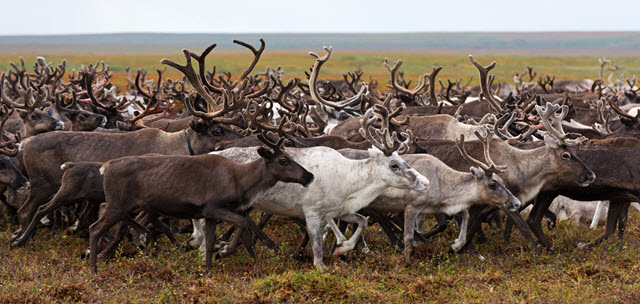
For elk, caribou, and mule deer, seasonal migration is deeply ingrained in each animal’s instincts. Migration is driven by necessity for most other species of deer, and if they don’t need to move to survive, most other deer species prefer to stay in their native habitat year-round.

